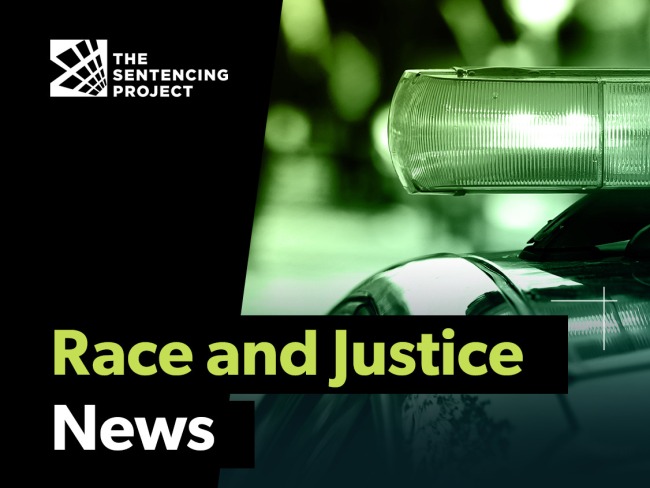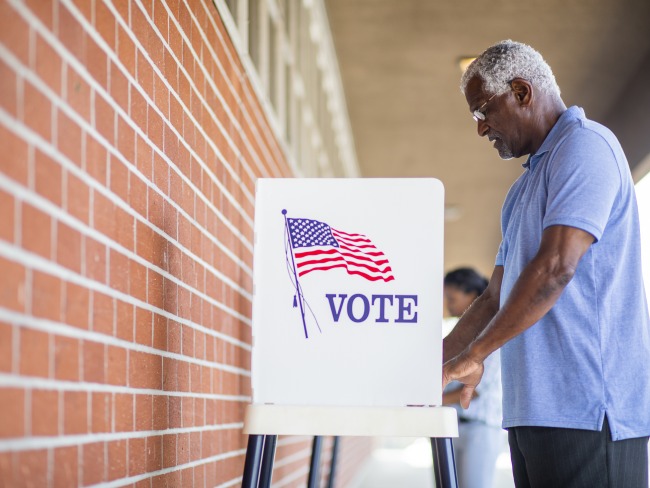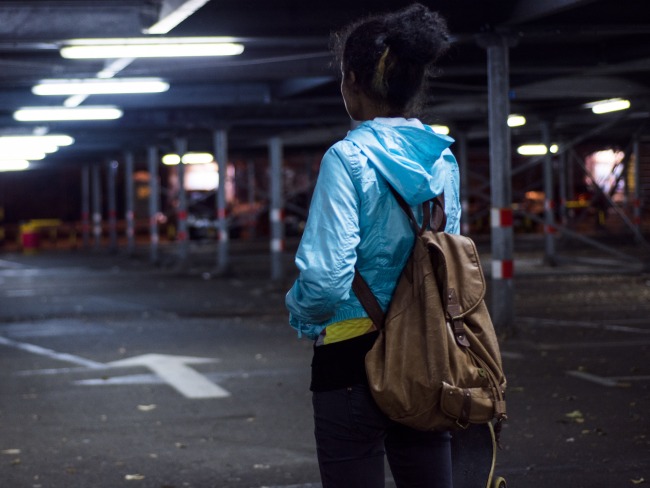Race and Justice News: White Supremacy’s Hold on Criminal Legal Institutions
The brutal killing of Tyre Nichols at the hands of Memphis police officers has underscored the urgent need for public safety approaches that protect the humanity and dignity of Black Americans. Reducing criminal legal contact at every stage is a key step towards achieving racial equity.
Related to: Racial Justice

The brutal killing of Tyre Nichols at the hands of Memphis police officers has underscored the urgent need for public safety approaches that protect the humanity and dignity of Black Americans. Amidst recognition of the shortcomings of past reforms are calls, such as from Sherrilyn Ifill, to recognize “the power and resilience of white supremacy, and its hold on the institution of American law enforcement.” In this context, a key element of reform “is not just adopting progressive policies or instituting better training, but more importantly placing long term institutional constraints on the system itself,” writes Parisa Dehghani-Tafti, a Commonwealth’s Attorney in Virginia. Reducing criminal legal contact at every stage is a key step towards achieving racial equity. As a recent report by the National Academy of Sciences has noted: “Criminal justice reforms that can reduce the scale of police stops and prison admissions, the duration of long sentences, and the duration and intensity of community supervision are likely to produce large absolute reductions in criminal justice involvement in minority communities.”
Policing
Police Overrepresent Black Suspects in Facebook Posts
Facebook posts by U.S. law enforcement agencies overrepresent Black individuals suspected of committing serious crimes relative to local arrest rates, according to an analysis of nearly 14,000 Facebook law enforcement pages by Ben Grunwald and colleagues in the Proceedings of the National Academy of Sciences. The study, featured in Fast Company and the Economist, found disparate crime coverage posts across various crime types and geographic regions. The authors note: “Widespread exposure to overreporting risks reinforcing racial stereotypes about crime and exacerbating punitive preferences among the polity more generally.”
The authors explain that the disparity may be supply-driven, with social media posts reflecting the preferences or incentives of police departments. Alternatively, the disparity may be demand-driven, reflecting the preferences of content consumers. To reduce the impact of racialized crime coverage, the authors suggest authorities limit reporting on suspect race to instances where the suspect remains at large and other such circumstances where the benefit exceeds the societal costs of reinforcing race-based stereotypes related to crime. The Sentencing Project’s media guide offers 10 recommendations on crime coverage that can inform both traditional and social media content producers.
Incarceration
Black Men Disproportionately Face Civil Commitment
Black men were more than twice as likely to be civilly committed for crimes of a sexual nature compared to white men, according to a study of 13 states published by the UCLA School of Law Williams Institute. In 20 states and the federal government, civil commitment allows for the indefinite confinement of persons beyond the term of their court-ordered sentence, often for crimes of a sexual nature. Trevor Hoppe and colleagues analyzed data from state and federal agencies that oversee civil commitments, public registry and department of corrections websites, and annual surveys from state civil commitment programs. After controlling for population size, they found that 7.7 Black residents per 100,000 were civilly committed compared to 3.1 per 100,000 white residents aged 16 or older. They posit this disproportionality is in part a result of the policing of Black communities and the stigmatization of Black sexuality.
The year 2022 marked the 25th “anniversary” of Kansas vs. Hendricks, in which the U.S. Supreme Court upheld civil commitment. The Court stated that these laws did not embody retribution or deterrence, provided treatment, and there was potential for release from civil commitment. But media reports reveal that these facilities are “shadow prisons,” with no clear path to release and many dying while committed. Hoppe and his team estimate that 6,300 people are civilly committed in the United States.
Courts
Tackling American Indian-White Disparities in Montana Courts
American Indians in Montana are more likely than whites to face prison time for certain felonies, to serve longer sentences, and to experience revocation of community supervision, according to a racial equity study conducted by the Council of State Governments Justice Center covered by the Daily Montanan. Despite comprising 5% of the state’s adult population, American Indians represent 23% of the state’s prison population. Between 2016 and 2020, American Indians were more likely than their white counterparts to be incarcerated for felony criminal endangerment—which carries a far longer sentence in Montana than in other states. Once incarcerated for any offense, American Indians were held 27 days longer than similarly situated whites. Probation and parole agents were also more likely to revoke the supervision of American Indians than comparable whites.
The report, a continuation of prior work completed as part of the Justice Reinvestment Initiative, suggests a “largely consistent pattern of American Indian-white disparities in decision-making across Montana’s criminal justice system.” Key recommendations include conducting a review of how criminal endangerment is used in plea agreements, providing additional housing and reentry support for American Indians returning to rural areas to reduce release delays, and investing in resources for behavioral health needs to reduce supervision revocations related to drug or alcohol use.
Public Defenders Outperform Private Attorneys in Federal Courts
While the type of attorney “should not have any effect on the decision to incarcerate or for how long,” an Urban Institute report finds that in the federal system, public defenders achieved a lower likelihood of incarceration and shorter sentences than private attorneys or Criminal Justice Act panel attorneys who are contracted by the government. Kelly Roberts Freeman and colleagues examined federal district court case dispositions between 2015 and 2018. They found that individuals represented by private attorneys and Criminal Justice Act panel attorneys had 18-25% greater odds of incarceration than those represented by federal public defenders, after controlling for offense type, criminal history, and other factors.
They also found that in cases resulting in incarceration, people represented by private attorneys had 8% longer average sentences than those represented by federal public defenders, and those represented by Criminal Justice Act panel attorneys had 4% longer average sentences than those represented by federal public defenders. They conclude: “these findings suggest that federal public defenders are an important part of the federal courtroom workgroup with specific expertise in federal criminal cases and more familiarity with the judges and prosecutors.”




